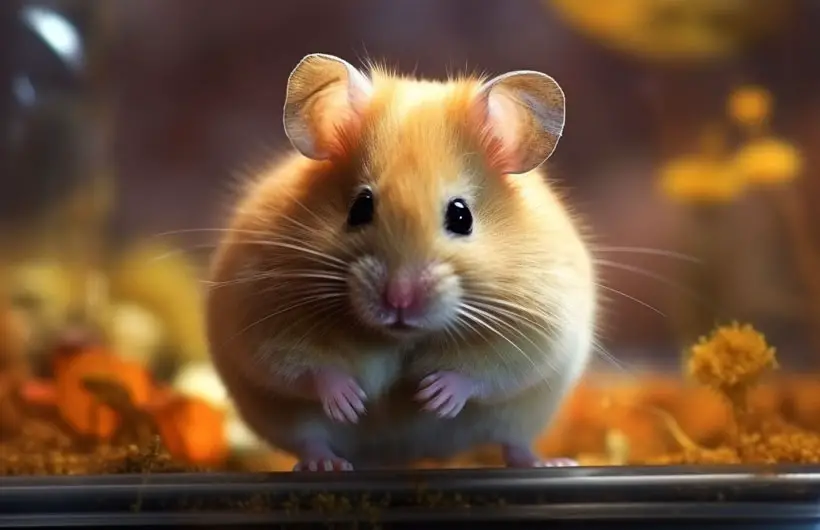Hamster Breeding Guide: What You Need to Know Before Breeding Your Pets
Breeding hamsters can be troublesome when the female shows aggression toward the male member due to wrong timing. Besides, picking up two random mates may become dangerous for the mother and the babies.
So what do you need to know before breeding your pets? You need to select healthy, sexually mature, non-sibling mating pairs. Introduce them to each other when the female hamster is in heat. If they get along, separate them after 20-30 minutes. Also, avoid disturbing the sows during pregnancy.
In this article, we will discuss considerations before, during, and after mating two hamsters. You will also learn how to care for the pups and their mother. So, keep reading.
What You Need to Know Before Breeding Your Pet Hamsters

The initial breeding step is to choose appropriate male and female hamsters, known as boars and sows. For successful breeding, you must consider a few factors regarding the boars and sows. Here are a few of those considerations:
Healthy
If any of the boars or sows are not healthy, they will produce unhealthy and weak offspring. That’s why to choose healthy mating pairs with shiny furs and clear and interested eyes.
Not Siblings
Always avoid mating the brother-sister pair. Otherwise, the baby hamster will have defects and genetic disorders.
Species Of The Mates
We recommend avoiding cross-breeding among the species of hamsters. Otherwise, the pups will be defective, gain obesity, or may suffer from cancer, diabetes, and glaucoma.
Therefore, always choose mating boars and sows from similar species and breeds to get healthy offspring.

Age
After 4-6 weeks of their birth, the hamsters become physically developed for reproduction. Typically, you can breed the male members anytime if they are sexually mature. But we recommend not breeding the female members before 13 weeks of their birth.
The reason is pregnancy may cause different health issues in younger sows. Also, there is a high risk that they will eat up their pups after giving birth.
Heat Period
Only during the estrus sows will show interest in mating with boars. If the sows are uninterested, they may start fighting with the boards. Generally, the sows win in this kind of fight and can even cause the death of the boars.
And boars are always ready for mating after reaching their maturity. So, if the sows are not ready, you can see these cues for determining the sows’ interest in mating:
- You can smell off-flavor, like a musky smell from your pet sows
- Before entering the heat, they release cloudy urine
- Stroke the sow’s back; if she doesn’t lift her tail, she is not in estrus
Keeping Light On During Winter
Winter can cause an imbalance in their heat period or breeding interest. That’s why you need to keep the room heated by keeping the lights turned on for almost 12 hours a day.
Ultimate Guide For Hamster Breeding Process

Introducing and isolating the mating pair before and after mating is two essential breeding stages. Let’s know about these in detail:
Introducing The Boars To The Sows
Generally, the sows come in the heat after every 4 days, and the period stays for 4-24 hours. Introduce the boars to the sows only when the sows are in estrus.
Typically, they sleep all day and remain active during the night. Hence, the sows’ estrus will most likely start in the evening. Therefore, introduce the mates in the evening.
Here are two ways of introducing boars to sows:
- You can put the boar in the sow’s cage. But in this case, the sows may act territorial and attack the boar. If this happens, wear thick hand gloves to avoid biting and separate them
- Using a neutral cage is an excellent way to eliminate their territorial behavior. In this case, place the boar within a new cage and then place the female

In both cases, we recommend keeping the mates’ cages side by side for several days. During this period, they release pheromones and get used to the smell of each other.
Also, if the sow rejects or fights with the boar, you should remove the boar from the cage. After this, continue the process the following evening or the next estrus cycle. Keep trying until the sow mate with the boar.
Isolating The Boars From The Sows After The Mating Period
If the sow shows receptive behavior towards the boar, they will mate almost immediately. The mating period may continue for nearly 20-30 minutes. After this period, isolate the boar from the sow to another cage.
Also, keep monitoring if they are losing interest in intercourse and starting fighting. If you find any indication of these, remove the boar shortly.
Taking Care Of Hamsters During Their Pregnancy

Sow’s pregnancy can last for 16-22 days, according to their species. During this period, the sows will go through emotional and physical changes. Thus, they will require additional care like:
- Provide them with more protein-rich foods. Tiny chicken chunks and other supplementary food will be good options for meeting their increased appetite
- You can place a 6×6 inches nesting box inside the sow’s cage
- Try to provide enough bedding materials such as cotton cloth or newspapers
- Don’t touch your hamster much during pregnancy, as she can be aggressive and bite you
- You need to clean the cage after 14 days of their copulation
Post-Pregnancy Care For Hamsters And Their Babies
The post-pregnancy period of the sows is quite vulnerable. You shouldn’t interfere with the mother and pups for at least 7 days. Generally, the sow gives birth to the pups while moving around. Then, she brings them together to her nest.

If you try to touch the offspring, there is a high chance that she will get stressed. As a result, she will eat up all her pups.
- Don’t try to clean the cage 1 week after giving birth
- Remember to provide adequate food, milk-soaked bread, and water to the mother. While doing this, try to be as quick and quiet as possible
- After one week, you can provide solid food items to the pups
- Keep the cage dust free and clean to prevent infection
- You must separate the pups from their mother after 4 weeks. Otherwise, she won’t enter the estrus until the pups are with her
- Don’t place the pups in their father’s cage; he may harm them
- To avoid siblings breeding, you must put the male and female hamsters in separate cages after 5-6 weeks.
- After 10 weeks, you must provide them with separate cages, as staying in a group can cause fighting and stress
Check this Youtube video to understand the caring process better:
FAQs
In this FAQs section, we will answer a few most familiar questions about the breeding of hamsters.
Q: Which Types Of Hamsters Are Easier To Breed?
Among all the hamster varieties, breeding dwarf ones will be relatively easier. The reason is these rodent types are most social and friendly with each other. Thus, they will get along with each other quickly.
Q: How Many Times Can I Breed My Hamster?
Generally, a hamster may begin breeding at the age of 4-6 months and stop around 12-18 months age. But it will need at least a 3-month gap between every breeding period. Thus, giving birth to only 2-3 litter is preferable.
Q: How Many Pups Can Hamsters Have In A Litter?
On average, in each litter, sows will produce 4-6 pups. Sometimes, pups can be as many as 20 in a litter.
Conclusion
Though hamsters’ mating may seem easy, there are several crucial factors that you need to consider. So that was all for our hamster breeding guide. Generally, sexually matured sows come in the heat after every 4 days.
You need to breed the sow and boar during this heat. The sows can reject boar for many reasons, but you need to keep trying until the mating is successful. Also, during pregnancy and after birth, you need to supply the sows with adequate nutritional foods.




